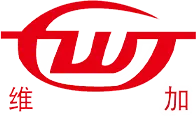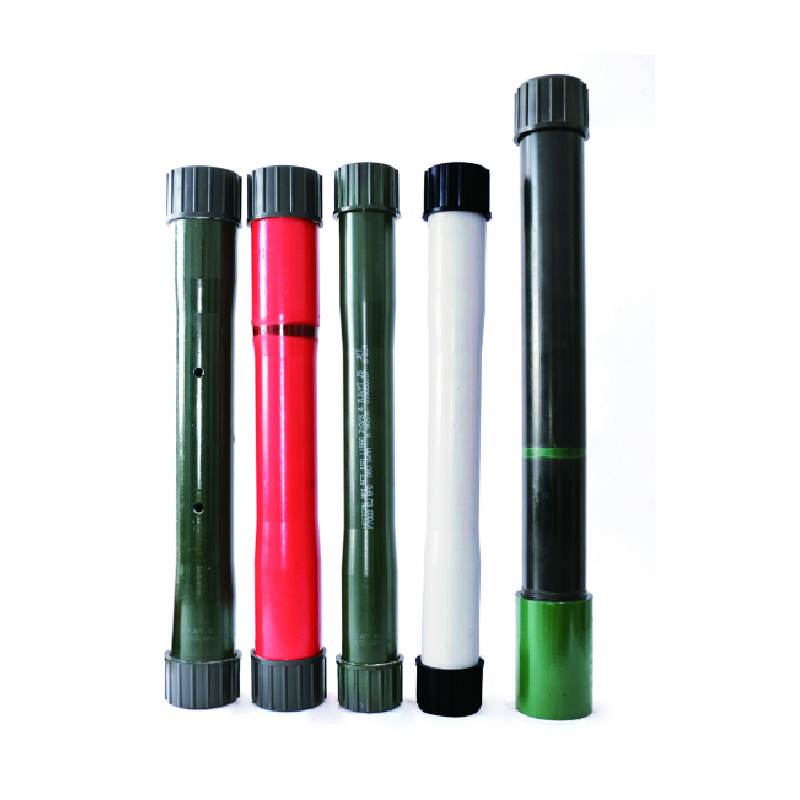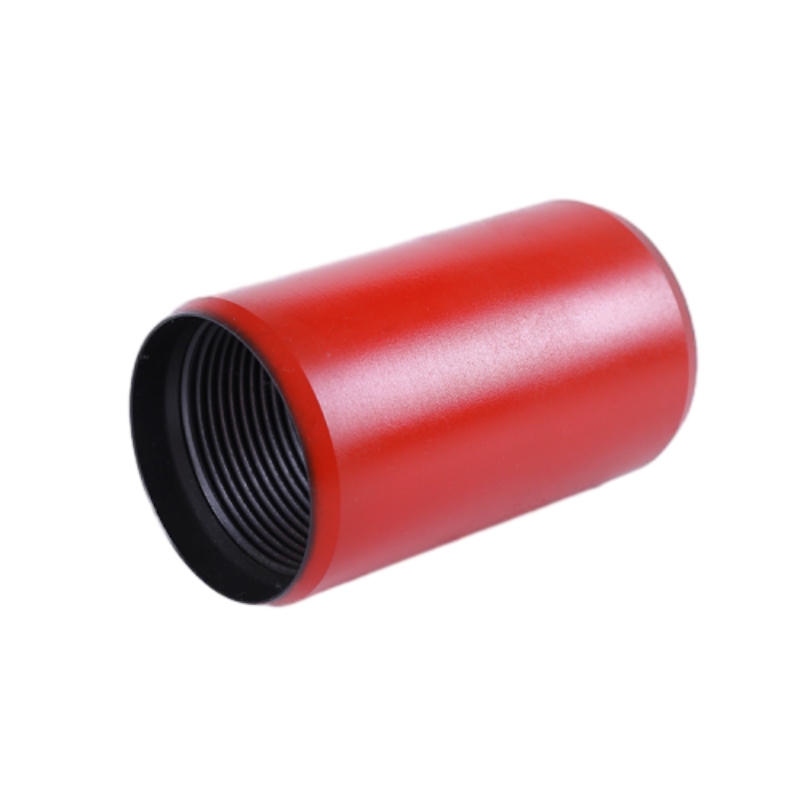High-Performance Tubing Crossover for Drilling Operations
Understanding the Critical Role of Tubing Crossovers in Oil & Gas Operations
In the demanding realm of oil and gas extraction, the integrity and efficiency of downhole equipment are paramount. A critical component facilitating seamless transitions between different tubing sizes or thread types is the tubing crossover. These precision-engineered connectors are indispensable for optimizing wellbore configurations, accommodating varied tooling, and ensuring operational safety. From deep-sea drilling to complex shale gas extraction, the reliability of these components directly impacts production rates and long-term asset integrity. Their robust design must withstand extreme pressures, corrosive environments, and high temperatures, making material selection and manufacturing precision non-negotiable. The industry's continuous drive for enhanced efficiency and extended well lifespans underscores the evolving sophistication required for every element, particularly critical connection points like crossovers.
The strategic deployment of a tubing crossover allows for versatile string designs, enabling operators to adapt to specific geological conditions or production requirements without compromising the structural integrity of the well. This adaptability is crucial in minimizing downtime and optimizing resource recovery. For instance, when integrating specialized tools like a pump seating nipple into a tubing string, a custom-designed crossover ensures a secure and leak-proof interface, vital for artificial lift systems. The precise dimensional control and material properties of these components are not merely beneficial but essential for preventing catastrophic failures, ensuring fluid containment, and maintaining optimal flow dynamics throughout the production lifecycle.
Technical Specifications and Performance Parameters
Selecting the appropriate tubing crossover requires a meticulous evaluation of its technical specifications to match the specific wellbore conditions and operational demands. Key parameters include outer diameter (OD), inner diameter (ID), thread type (e.g., API Buttress, EUE, NUE, Premium connections), material grade, pressure rating, and temperature tolerance. These specifications dictate the crossover's compatibility with existing tubing strings and its ability to withstand downhole stresses. Furthermore, surface finishes and corrosion resistance properties are crucial for extending service life in aggressive environments containing H2S, CO2, or chlorides.
| Parameter | Description / Range | Typical Standard |
|---|---|---|
| Outer Diameter (OD) | 2-3/8" to 7" (60.3mm to 177.8mm) | API 5CT |
| Inner Diameter (ID) | Varies based on OD and wall thickness | API 5CT |
| Thread Types | EUE (External Upset End), NUE (Non-Upset End), LTC (Long Thread Coupling), BTC (Buttress Thread Coupling), Premium Connections (e.g., VAM, TenarisHydril) | API 5B |
| Material Grades | J55, K55, N80, L80, P110, Q125, T95, C90; Duplex/Super Duplex Stainless Steels, Nickel Alloys (e.g., Inconel) for sour service | API 5CT, NACE MR0175 |
| Pressure Rating | Up to 15,000 PSI (103 MPa) or higher, depending on size and material | API 5CT/5CRA |
| Temperature Range | -20°F to 400°F (-29°C to 204°C); specific alloys for extreme temperatures | ISO 10427-1 |
| Length | Typically 1ft to 3ft, customizable | Manufacturer Specific |
For specialized drilling applications, such as crossover sub drilling operations, the precise interplay of thread geometry and material strength is critical. The crossover must maintain structural integrity under dynamic loads, vibrations, and torque. Manufacturers often provide detailed technical data sheets, including yield strength, tensile strength, and impact resistance, allowing engineers to perform comprehensive stress analyses. Adherence to API (American Petroleum Institute) standards, such as API 5CT for casing and tubing, and API 5B for threading, ensures interoperability and consistent performance across the industry.
Precision Manufacturing and Stringent Quality Assurance
The manufacturing of a tubing crossover is a complex process demanding unparalleled precision and adherence to strict quality control protocols. It typically begins with high-quality raw materials, often seamless steel pipes or solid bar stock, sourced from reputable mills. Common materials include various grades of alloy steel (e.g., AISI 4140, 4130) and corrosion-resistant alloys (CRAs) like Duplex, Super Duplex, or Nickel-based alloys (e.g., Inconel 625) for sour service environments compliant with NACE MR0175.
The manufacturing process sequence generally involves:
- Material Selection & Cutting: Raw materials are chosen based on the specified grade and then precisely cut to length.
- Forging/Forming: For enhanced strength and grain structure, some crossovers may undergo hot forging, especially for higher pressure applications. This process aligns the material's grain flow with the part's contours, improving its mechanical properties.
- CNC Machining: Advanced Computer Numerical Control (CNC) lathes and milling machines are used to precisely machine the external and internal diameters, critical thread profiles (e.g., API 5B, premium connections), and seal surfaces. This ensures dimensional accuracy to within microns and achieves the required surface finish for optimal sealing.
- Heat Treatment: Depending on the material grade, heat treatment processes such as quenching, tempering, or annealing are applied to achieve the desired mechanical properties, including hardness, toughness, and yield strength.
- Non-Destructive Testing (NDT): Comprehensive NDT methods are employed, including Magnetic Particle Inspection (MPI), Ultrasonic Testing (UT), and Liquid Penetrant Inspection (LPI), to detect any subsurface or surface flaws.
- Hydrostatic Testing: Each crossover undergoes hydrostatic pressure testing to verify its structural integrity and leak resistance under simulated downhole pressures, often exceeding operational requirements.
- Threading Inspection & Gage Control: Threads are meticulously inspected using precise gages to ensure full compliance with API or proprietary premium connection specifications, guaranteeing proper makeup and sealing.
- Surface Treatment & Coating: Anti-corrosion coatings (e.g., phosphate, electroless nickel plating) or passivation treatments may be applied to enhance resistance to harsh chemicals and extend service life, particularly in environments susceptible to stress corrosion cracking.

Advanced CNC machining ensures precision for every tubing crossover.
Key Technical Advantages and Performance in Demanding Environments
The technical advantages of a well-engineered tubing crossover are manifold, directly impacting operational efficiency, safety, and cost-effectiveness. Foremost among these is superior seal integrity. Utilizing advanced thread forms and robust sealing mechanisms, such as metal-to-metal seals or elastomeric seals, these crossovers prevent fluid bypass and maintain pressure differentials, crucial for efficient production. This capability directly contributes to energy savings by minimizing lost pressure and maximizing the hydraulic efficiency of the downhole system.
Another significant advantage is their exceptional corrosion resistance. In environments laden with H2S, CO2, chlorides, and other corrosive agents, standard steel components quickly degrade. High-quality crossovers, manufactured from specialized Corrosion Resistant Alloys (CRAs) like Super Duplex Stainless Steels or Nickel-based alloys (e.g., Incoloy 825, Hastelloy C-276), provide long-term protection against pitting, crevice corrosion, and stress corrosion cracking. This extended durability significantly reduces the frequency of costly workovers and replacements, enhancing the overall service life of the well. For complex directional drilling, the robustness of a crossover drilling tool is paramount, needing to withstand severe torsional and bending stresses while maintaining connection integrity.
The dimensional stability and precise threading also ensure ease of makeup and breakout, reducing rig time and operational risks. Unlike inferior components that might gall or seize, premium crossovers offer smooth engagement, preserving thread integrity over multiple connections. This is particularly beneficial in scenarios requiring frequent assembly and disassembly, such as well completions or intervention operations. The use of premium tubing crossover designs also contributes to environmental protection by minimizing the risk of hazardous fluid leaks.
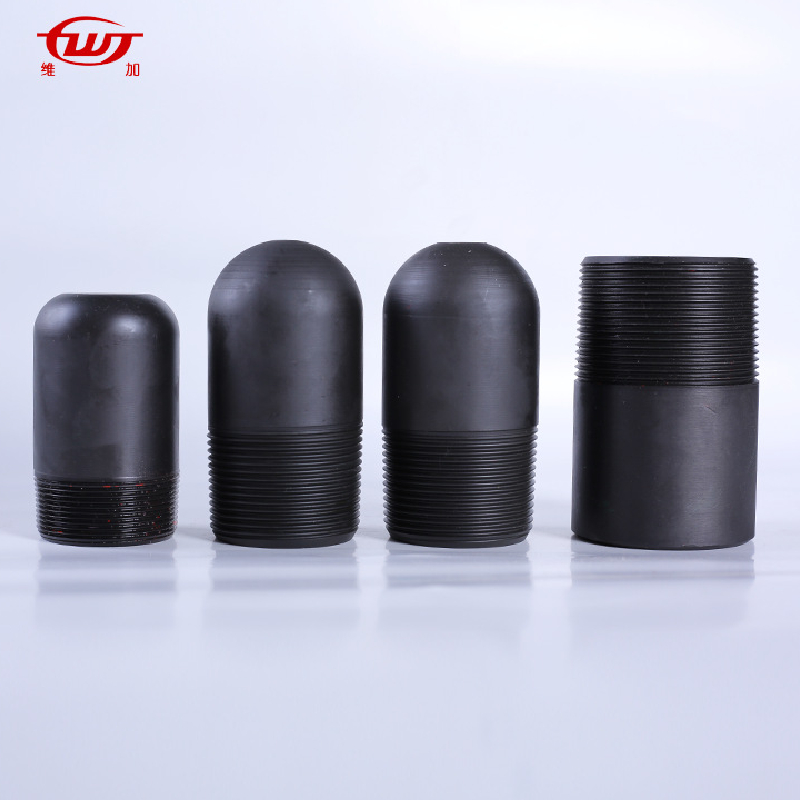
Precision threading on a high-grade tubing crossover for critical applications.
Diverse Application Scenarios Across Industrial Sectors
While primarily recognized in the oil and gas industry, the utility of a tubing crossover extends to various other sectors where high-pressure fluid transfer, structural integrity, and resistance to harsh conditions are critical.
- Petrochemical Industry: Crossovers are vital for connecting different pipeline sections or equipment within refineries and chemical plants. They facilitate transitions between pipe sizes for process lines, ensuring continuity and preventing leaks of hazardous chemicals. Their corrosion-resistant properties are particularly valued in handling aggressive media.
- Metallurgical Sector: In steel mills and other metallurgical facilities, crossovers are employed in water cooling systems for furnaces or in hydraulic lines where high pressures and temperature fluctuations are common. Their robust construction ensures reliability in high-heat and abrasive environments.
- Water Supply and Drainage: For large-scale municipal water systems or industrial drainage networks, crossovers help in adapting various pipe dimensions, particularly in pumping stations or treatment plants. While the pressure requirements might be lower than in oil and gas, durability and corrosion resistance are still key for long-term infrastructure integrity.
- Geothermal Energy Production: Similar to oil and gas, geothermal wells involve high temperatures and often corrosive geothermal fluids. Specialized crossovers are essential for connecting downhole tools and production tubing in these challenging environments.
- Mining Operations: In deep mining, the transfer of slurries, dewatering, or ventilation systems often utilizes various pipe sizes, requiring reliable crossover connections that can withstand abrasive materials and demanding underground conditions. A drill pipe crossover in mining ensures seamless connection between different drill string components.
Each application demands specific material grades, pressure ratings, and connection types, underscoring the need for tailored solutions. The adaptability and robust nature of these components make them indispensable in maintaining the operational continuity and safety of diverse industrial processes.
Manufacturer Comparison and Customized Solutions
When sourcing a tubing crossover, industrial clients face a landscape of manufacturers, each with varying capabilities and product offerings. Differentiating factors typically include material science expertise, manufacturing precision, adherence to international standards, breadth of product range, and post-sales support. Below is a simplified comparison highlighting key areas to consider:
| Feature | Manufacturer A (Premium) | Manufacturer B (Standard) | WJ Petroleum (Example) |
|---|---|---|---|
| Certifications | API Q1, ISO 9001, NACE MR0175, DNV GL | ISO 9001 | API Q1, ISO 9001, extensive in-house testing |
| Material Range | Full range, including Super Duplex, Inconel | Standard carbon/alloy steels | API grades, CRAs (L80, P110, T95, C90, 13Cr, Super 13Cr, 2205 Duplex, 2507 Super Duplex, Inconel 625/825) |
| Customization | Extensive engineering support, bespoke designs | Limited to standard configurations | High capability for custom dimensions, threads, and material selection for specific well conditions. |
| Lead Time | Moderate (4-8 weeks for custom) | Short (2-4 weeks for standard) | Competitive (typically 3-6 weeks for custom, shorter for stock) |
| Field Performance (Feedback) | Excellent, long service life in harsh conditions | Satisfactory for benign conditions | Proven reliability in challenging global projects for over 20 years. |
Leading manufacturers distinguish themselves through their ability to provide highly customized tubing crossover solutions. This includes engineering bespoke dimensions, integrating specialized premium threads, and utilizing exotic alloys tailored to extreme pressure, temperature, and corrosive environments. A collaborative approach, where the manufacturer works closely with the client's engineering team, ensures that the final product perfectly aligns with specific wellbore geometries, flow requirements, and longevity expectations. This adaptability is crucial for optimizing overall project costs and ensuring long-term operational success, particularly in unconventional resource plays.
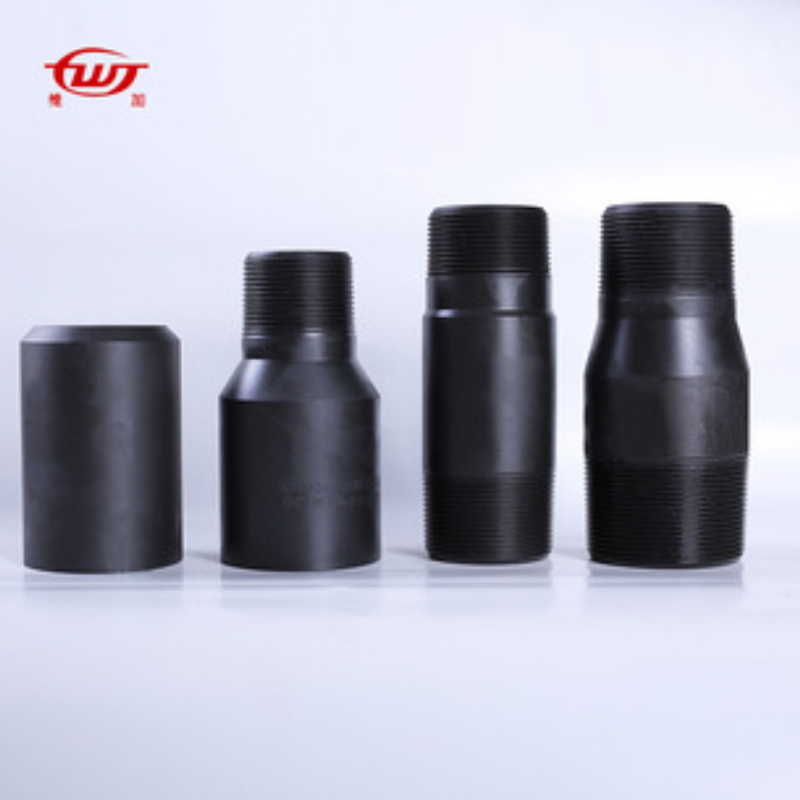
Tailored designs for unique operational challenges.
Real-World Application Cases and Proven Experience
The true testament to a tubing crossover's quality lies in its proven performance in diverse, real-world applications. Our company, WJ Petroleum, has supplied high-integrity crossovers for over two decades, contributing to the success of numerous challenging projects globally.
Case Study 1: High-Pressure Offshore Gas Well (Middle East)
For a super-deep, high-pressure, high-temperature (HPHT) offshore gas well development project, specialized tubing crossovers made from Super 13 Chrome (S13Cr) and Duplex stainless steel were required to handle pressures up to 12,000 PSI and temperatures exceeding 350°F (177°C), along with significant H2S and CO2 concentrations. Our custom-engineered crossovers, featuring proprietary premium connections, provided reliable, leak-proof interfaces for the production tubing string. Operational data demonstrated zero failures attributed to the crossovers over a five-year period, significantly reducing maintenance costs and ensuring consistent gas flow. This project underscored our expertise in delivering solutions for the most demanding sour service applications.
Case Study 2: Geothermal Power Plant (Southeast Asia)
In a large-scale geothermal energy project, the challenge was to connect different casing and tubing sizes within wells characterized by highly corrosive geothermal brine. Standard carbon steel crossovers would have quickly succumbed to corrosion. We provided custom tubing crossover pieces fabricated from Inconel 825, known for its exceptional resistance to chloride-induced stress corrosion cracking and high temperatures. These components seamlessly integrated into the geothermal well design, ensuring the long-term integrity of the production system and contributing to the consistent output of renewable energy.
Client Feedback: "WJ Petroleum's crossovers consistently exceed our expectations. Their technical team provided invaluable support in selecting the right materials and designs for our ultra-deepwater projects. We've experienced enhanced well integrity and reduced NPT (Non-Productive Time) since standardizing their products." - Chief Drilling Engineer, Major International Oil Company. This direct feedback highlights the tangible benefits of partnering with an experienced and authoritative supplier.
Ensuring Trust: FAQs, Delivery, and Customer Support
Establishing trust with B2B clients goes beyond product quality; it encompasses transparency, reliable logistics, and unwavering customer support.
Frequently Asked Questions (FAQs)
-
Q: What is the typical lead time for a custom tubing crossover?
A: For standard API grade crossovers, lead times can range from 2 to 4 weeks. For highly customized designs involving exotic materials or complex machining, it typically ranges from 3 to 6 weeks, depending on material availability and production queue. We prioritize urgent requests and maintain a stock of common configurations to facilitate faster delivery. -
Q: How do you ensure the quality and integrity of your crossovers?
A: We adhere to stringent quality management systems (ISO 9001, API Spec Q1). Every tubing crossover undergoes comprehensive inspection, including dimensional checks, NDT (MPI, UT, LPI), hardness testing, and individual hydrostatic pressure testing. Material certificates (MTRs) are provided for full traceability. -
Q: What kind of warranty do you offer on your products?
A: We offer a comprehensive warranty covering manufacturing defects and material integrity for a specified period (typically 12-24 months from delivery, or as agreed per contract). Our commitment is to provide products that meet or exceed industry standards and client expectations. -
Q: Can you help with material selection for specific well conditions?
A: Absolutely. Our experienced metallurgical engineers and technical sales team provide expert consultation to recommend the optimal material grade and coating for your specific operating environment, considering factors like pressure, temperature, corrosive agents (H2S, CO2, chlorides), and fluid type.
Delivery and Logistics
Our logistics team ensures efficient and secure delivery of products worldwide. We work with trusted shipping partners to guarantee on-time delivery, minimizing project delays. Each product is carefully packaged to prevent damage during transit, utilizing robust crates and protective wrapping. We provide full documentation, including certificates of conformity and material test reports, for seamless customs clearance and inventory management.
Dedicated Customer Support
Our commitment extends beyond delivery. We offer dedicated customer support, including technical assistance for installation and operational troubleshooting. Our global network ensures that support is available whenever and wherever needed, providing peace of mind to our clients. For urgent field requirements, our rapid response team is equipped to address critical needs, underscoring our dedication to client success and satisfaction.
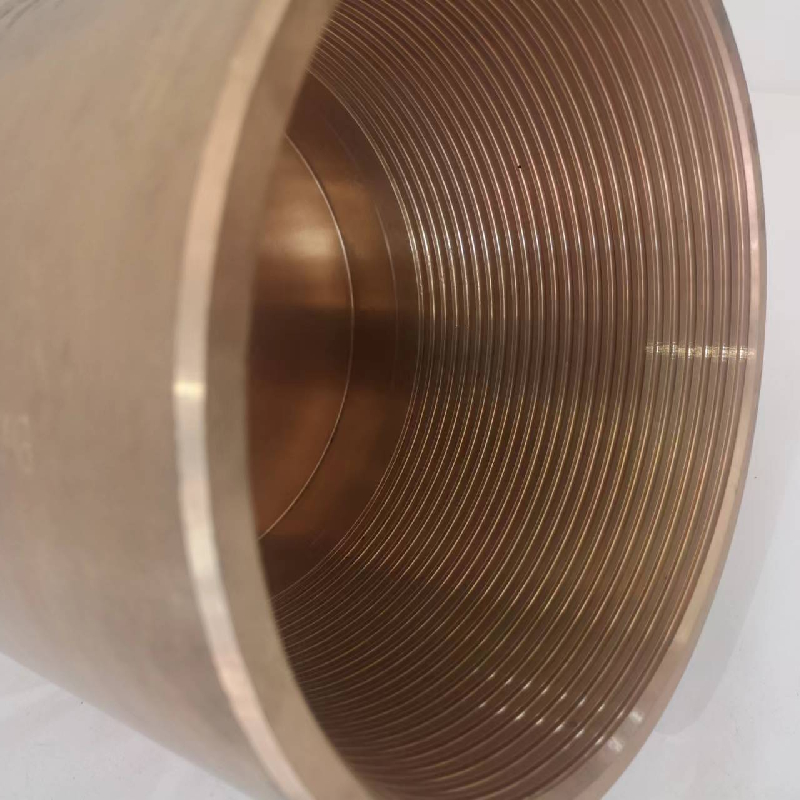
Rigorous testing guarantees the trustworthiness of every product.
Conclusion: Partnering for Downhole Excellence
The tubing crossover, while seemingly a small component, is a linchpin in ensuring the safety, efficiency, and longevity of critical downhole operations across the oil & gas, petrochemical, and other heavy industries. Its design, material selection, and manufacturing precision directly dictate its performance under the most challenging conditions. By prioritizing adherence to international standards, investing in advanced manufacturing processes, and offering comprehensive technical support, leading manufacturers empower operators to achieve optimal well performance and minimize operational risks. Choosing a reliable partner for your crossover needs is an investment in the long-term success and integrity of your assets.
Authoritative References
- American Petroleum Institute. (2018). API Specification 5CT: Specification for Casing and Tubing (10th ed.). Washington, D.C.: API Publishing.
- American Petroleum Institute. (2020). API Specification 5B: Threading, Gaging, and Thread Inspection of Casing, Tubing, and Line Pipe Threads (17th ed.). Washington, D.C.: API Publishing.
- International Organization for Standardization. (2015). ISO 9001: Quality management systems — Requirements. Geneva, Switzerland: ISO.
- NACE International. (2015). NACE MR0175/ISO 15156: Petroleum and natural gas industries — Materials for use in H2S-containing environments in oil and gas production. Houston, TX: NACE International.
- Society of Petroleum Engineers. (2023). SPE Publications. (No direct link as per instruction for citation format).
-
Tubing Crossover - API Compatible, Custom Sizes, In StockNewsNov.10,2025
-
Tubing Coupling | High-Strength, Leak-Proof Steel CouplingsNewsNov.10,2025
-
Wholesale API Threading Casing Coupling | API 5CT, Fast ShipNewsNov.10,2025
-
Pup Joint Supplier | API Certified, Custom, Quick ShipNewsNov.10,2025
-
Pup Joint Manufacturers | Precision Machined, Fast DeliveryNewsNov.10,2025
-
Tubing Coupling | Precision Steel, Leak-Proof, Fast DeliveryNewsNov.03,2025
